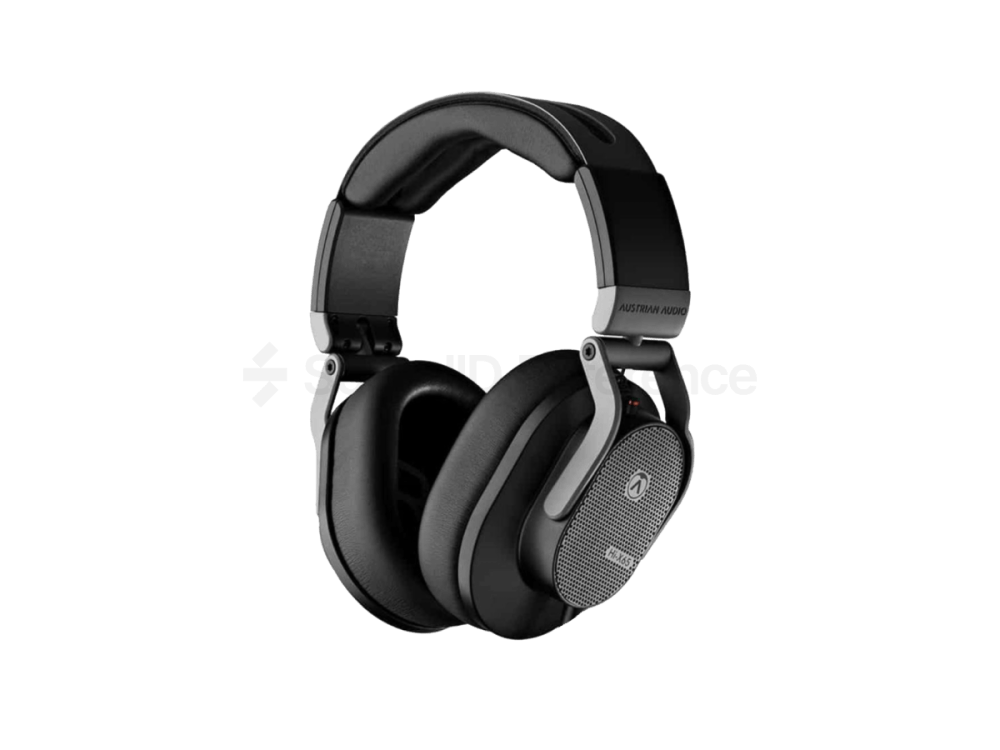There’s no shortage of amazing studio mixing headphones if you’re ready to spend above 300 Euros. This also happens to be the segment where Austrian Audio places its flagship Hi-X65 professional open-back over-ear headphones. Let’s see how the new high excursion driver developed by ex-AKG engineers compares!
- Solid build quality
- Good sub bass extension
Pros list with SoundID Reference calibration
- Full-spectrum neutrality
- Bright sound signature
- Tight for larger heads
Hi-X65 follow the trend of other recent open backs and is equally usable in the studio with audio interfaces and on the go with laptops and other mobile devices without worrying about reaching sufficient volume.
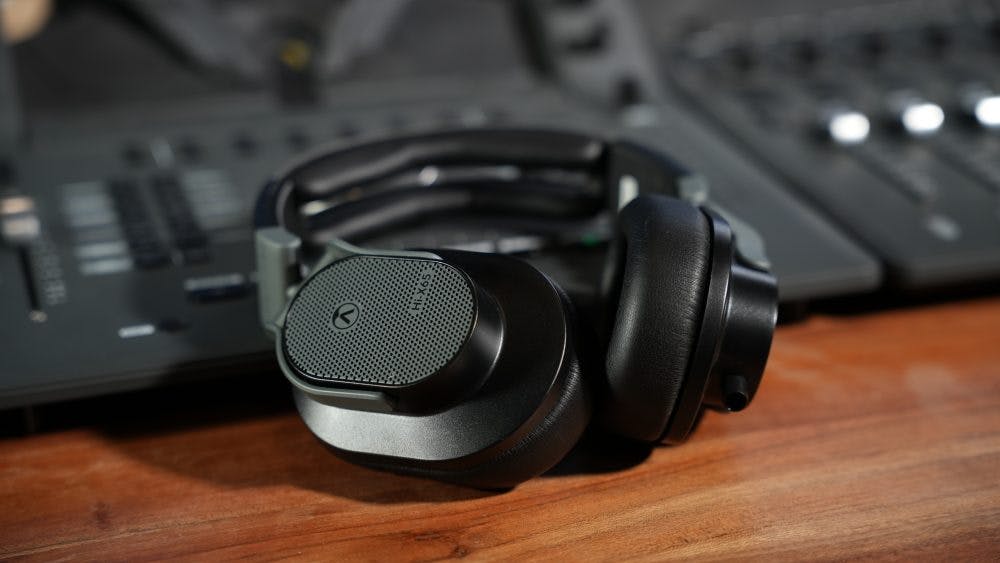
Austrian Audio didn’t opt for a super-lightweight yet questionable durability design like some other open-backs. Instead, Hi-X65s are quite robust, mid-weight set using metal for the high-stress parts and hard plastic for the rest of the build, resulting in a reasonable weight vs durability compromise. When handled, they feel really well put together and, despite their swiveling earcups and collapsible design, feel sturdy. Cable, as expected, is detachable, and two options are included in the package: 1.2 and 3 meters long, both straight. The pleather-clad memory foam ear pads and headband cushions are also replaceable and come as a set costing €59, or just earpads for €39.
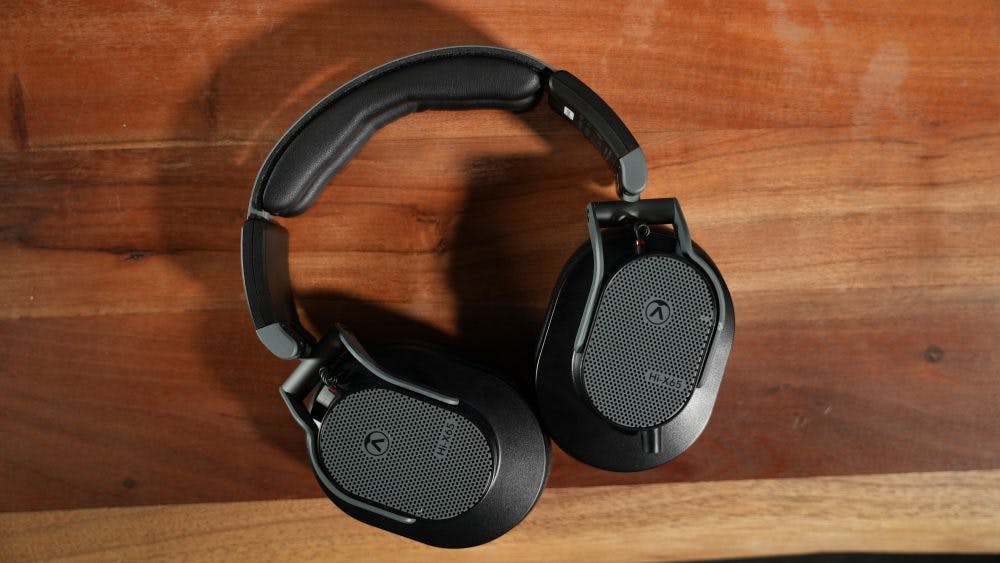
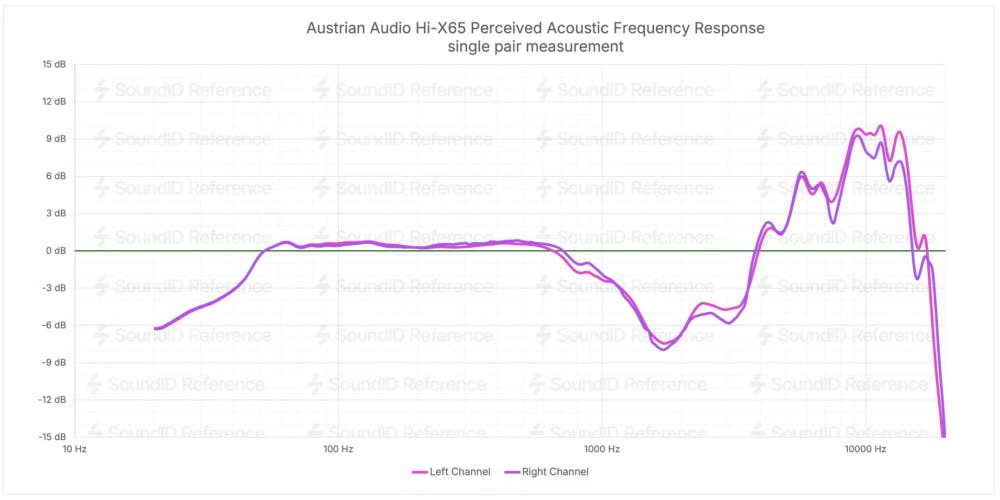
The low-end extension is an improvement over classic open-back designs like Sennheiser HD 650 or Beyerdynamic DT 880 Pro, and is comparable with other modern open-backs like Sennheiser HD 490 Pro and Neumann NDH 30. The overall bass and low-mid frequency response is remarkably neutral and leaves very little room for improvement. However, the high-mid dip and the treble boost are considerably more pronounced than in other recent open-back releases. The good news is that the overall shape is resonance-free, which makes the sound smooth, yet very bright due to the 10 dB increase around 10kHz. The attenuation in the high-mid region diminishes the presence and robs the signal of some bite.
For the 3 units we measured the channels were well matched throughout the spectrum, with a few narrow bandwidth discrepancies, contained within +/-2 dB in amplitude. It’s comparable performance to other recently developed models in this segment and is a sufficiently good result, so it shouldn’t cause any issues in mixing work.
While they were loved by testers with medium and smaller heads, with the headband extended to the limit, the clamping force increases and is stronger than in other models in this segment. Furthermore, the adjustment span of the headband is a bit limited, so the testers with larger heads found to use Hi-X65 at full extension, with ear cups barely accommodating ears. So if you usually find yourself using headphones with the headband at or near max extension, it’s likely this won’t be the most comfortable option for you.
Both ear pads and headband cushions are made of memory foam and have more limited volume and contact with the user’s head than usual for open-backs. This reduced contact patch to the temples, in conjunction with the increased clamping force, is another aspect not aiding long session comfort for those with bigger heads. Nonetheless, the inner volume of the ear pads is ample and fits even larger ears almost entirely.
With all this said, those with medium and small-sized heads were big fans and really enjoyed wearing them for extended sessions, with the only complaint being that the pleather can get sweaty. For those with larger heads, they are adequate but not as well-suited for long sessions as the Sennheiser HD 490 Pro.
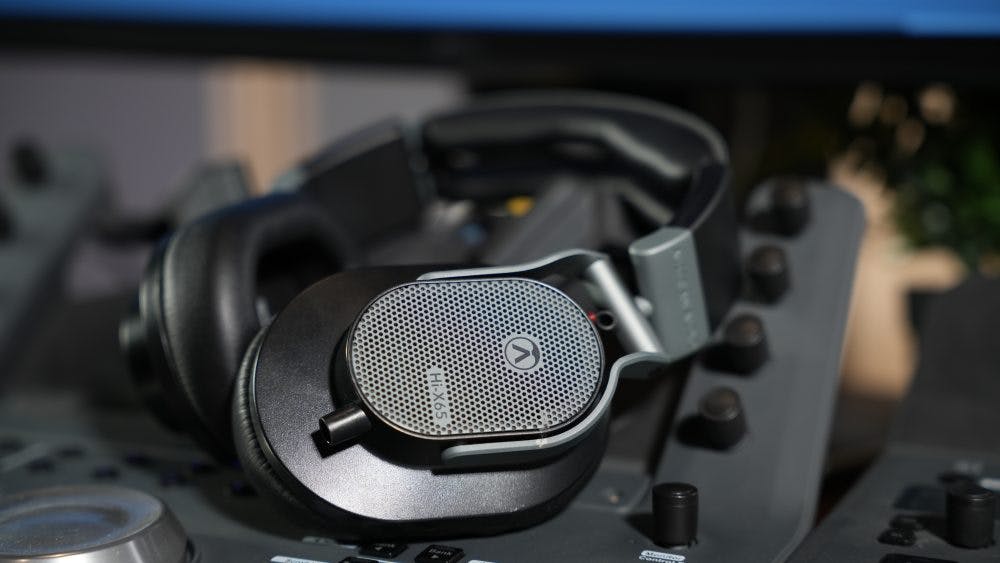
At €309, they’re on par with the legendary Sennheiser HD 650, which offers considerably more neutral sound, yet weaker sub-bass extension and less durable build. However, Hi–X65 is the most affordable option when compared to more recent rivals like Sennheiser HD 490 Pro, Sony MDR-MV1, and Neumann NDH 30 that cost €60 to €230 more. In addition to the great all-around performance, each of the other three has a distinct stand-out feature like the comfort of HD 490 Pro, unbelievable bass of MDR-MV1, or sound neutrality of NDH 30. Hi-X65 lacks that unique edge that would elevate it above the competition in any particular aspect, but it’s still a good overall package that’s a bit easier on the wallet.
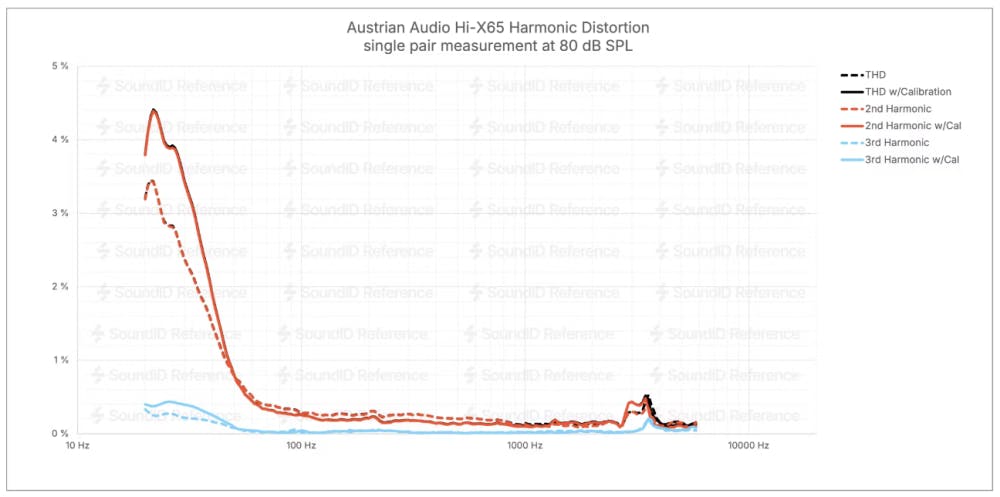
While it’s not the most impressive of the THD graphs, what matters is that the 1% mark is crossed at a reasonably low 50Hz. Also, it almost entirely consists of the 2nd harmonic distortion, meaning that in real-world scenarios, it goes unnoticed. Good performance from Hi-X65 drivers!
How accurate and consistent is the correction effect among different listeners?Austrian Audio Hi-X65, as most open-backs are good at delivering a consistent frequency response to different listeners. They beat almost all closed-backs in this regard, yet are left behind by open backs like Sennheiser HD 490 Pro, Sennheiser HD 650, and Neumann NDH 30.
How much do they differ pair to pair in terms of frequency response?The manufacturing consistency is high, and sound doesn’t fluctuate by more than 2dB between pairs up to the 10kHz mark. This, in conjunction with the good left-to-right channel matching and the consistent perceived frequency response across listeners, means that it’s a great performer when calibrated with SoundID Reference.
Rating
Conclusion
Austrian Audio’s high excursion driver delivers great sub bass extension, neutral mids, and a treble boost of a magnitude we haven’t seen in a while. All this is packaged in a sturdy, confidence-inspiring build featuring the unmistakable Austrian Audio design language. Hi-X65 is a good all-around performer at an adequate price. There are only two shortcomings, one will not affect everybody, and the other can be easily fixed. The first one is the long session comfort, which is slightly hindered for users with larger heads, mostly due to the increased clamping force. And the other one is the overly bright sound that the SoundID Reference calibration will easily take care of.
Final Rating
Calibration Enabled
Calibration
